Kristine Hughes's Blog, page 93
April 30, 2014
A PINTEREST POST

Here's another great photo I found on Pinterest recently of the swans at the Bishop's Palace in Wells, who ring a bell when they want to be fed. The things one learns on Pinterest!
From the Bishop's Palace website, where you'll also see a live streaming "Swan Cam":
The Bishop's Palace is world famous for its swans who ring a bell alongside the gatehouse when they want food. The swans are trained to pull on a rope which sounds the bell ringing and sends the Palace Caretakers, Paul and Carol Arblaster running to fetch some bread and open the window to feed them. Perhaps you will be lucky enough to see them do this when you visit!
Swans at the Palace were first taught to ring a bell for food by the daughter of Bishop Hervey in the 1870s and the tradition continues to this day. Bread is tied in clumps to the rope attracting the swans to nibble at it and pull it off, when they do this the bell rings. Gradually less and less bread is tied onto the rope as they begin to understand that by pulling the rope and hearing the bell means food will soon follow.
Rest assured, the swans and ducks all get a lot of attention from tourists and staff around The Bishop's Palace should Paul and Carol be away from the bell so they don't go hungry, they also feed off the moat silt bed and surrounding environment.
You can watch a YouTube video of the swans ringing the bell here.
Published on April 30, 2014 00:00
April 28, 2014
REDISCOVERING EGYPT
The Collection of the Dahesh Museum of Artat The Patty and Jay Baker Museum of Art in Naples, FL, through May 18, 2014. Click here for the Museum Website.
 Charles-Théodore Frère (French, 1814-1888)Along the Nile at Gyzeh
Charles-Théodore Frère (French, 1814-1888)Along the Nile at Gyzeh
When Napoleon Bonaparte's armies occupied Egypt in 1798, they were accompanied by scientists, historians, and archaeologists. The European world developed a fascination with Egyptian art, architecture, and culture. Well into the 20th century and to the present day, European artists have expressed their admiration in their interpretations of the allure of the ancient and modern cultures of the Nile.
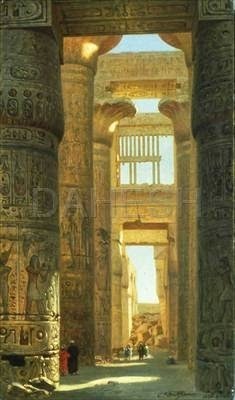 Ernst Karl Eugen Koerner (German 1846-1927)The Temple of Karnak: The Great Hypostyle Hall, 1890
Ernst Karl Eugen Koerner (German 1846-1927)The Temple of Karnak: The Great Hypostyle Hall, 1890
Koerner traveled to Egypt in 1873-74, and painted the huge columns of the temple, placing the human figures to illustrate the vast size of the columns.
The Dahesh Museum of New York City is devoted to collecting academic art of the 19th and 20th centuries. Organizing many exhibitions for museums and contributing loans to other exhibitions around the world is the mission of the Dahesh. This exhibition is co-curated by Director of Exhibitions David Farmer and Associate Curator Alia Nour; it is intended to survey "...the West’s fascination with Egypt and its diverse visual representations from 1798 until 1890."
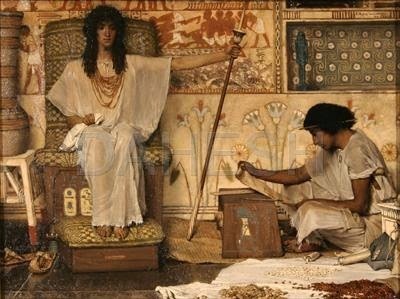 Lawrence Alma Tadema (British,born in the Netherlands, 1836-1912)Joseph, Overseer of Pharaoh’s Granaries, 1874
Lawrence Alma Tadema (British,born in the Netherlands, 1836-1912)Joseph, Overseer of Pharaoh’s Granaries, 1874
This painting by Alma Tadema was exhibited at London's Royal Academy in 1874. The Old Testament’s Joseph is seated on the throne accompanied by a scribe counting the grain. Alma Tadema based the ancient Egyptian decoration and accoutrements in his picture on actual artifacts. Behind the throne is a painting now in the British Museum from the tomb of Nebamun.
The Baker Museum exhibition includes more than 90 works from the Dahesh Museum, the Mervat Zahid Cultural Foundation, and a private collection. In the words of the description, "With its broad themes and rich imagery, this exhibition demonstrates that the West’s visions of Egypt were fostered by many factors — not only political interest, but also new scientific and technological advances, methods of transportation, and communications, as well as Romanticism, and the changing art market."
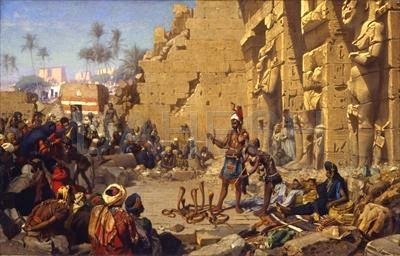 Karl Wilhelm Gentz (German, 1822-1890)The Snake Charmer, 1872
Karl Wilhelm Gentz (German, 1822-1890)The Snake Charmer, 1872
Gentz contrasts the dangerous performance with the noble ruins of the Temple of Madinet Habu in Thebes.
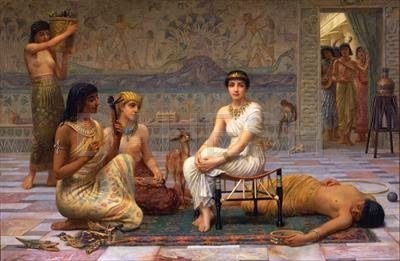 Edwin Longsden Long (British, 1829-1891)Love’s Labour Lost, 1885
Edwin Longsden Long (British, 1829-1891)Love’s Labour Lost, 1885
Edwin Long was another artist who used the holdings of various museums and the work of scholars to create the details of his paintings. Here many objects are based on the works of British Egyptologist John Gardner Wilkinson. When the painting was shown at the Royal Academy, a poem by the artists son, Maurice St. Clair, was included.
"When like an opening bud the flower of Youth
Unfolds its petals to the light of Truth,
Then mimic toys and tales of wondorous lore,
By puppets acted, charm not as before.
Amusement wearies out her skill in vain,
And calls the aid of music magic strain;
But happy childhood's limit passed for e’er
Youth rashly craves reality and care."
In the painting, the young noblewoman has outgrown the antics of her servants.The central figure, presumably a noble Egyptian girl, has become and adult and is no longer interested in the childish entertainment of her servants.
 Hermann David Solomon Corrodi (Italian, 1844-1905)The Ambush near Gizeh
Hermann David Solomon Corrodi (Italian, 1844-1905)The Ambush near Gizeh
Corrodi's work can be found in many collections including the Royal Collection, acquired by Queen Victoria and King George V.
If you are in the vicinity of Naples in the next few weeks, don't miss these colorful and evocative paintings at the Baker Museum.
Rediscovering Egypt: The Collection of the Dahesh Museum of Art, is on view at the Baker Museum, Artis, Naples, Florida, through May 18, 2014.
 Charles-Théodore Frère (French, 1814-1888)Along the Nile at Gyzeh
Charles-Théodore Frère (French, 1814-1888)Along the Nile at GyzehWhen Napoleon Bonaparte's armies occupied Egypt in 1798, they were accompanied by scientists, historians, and archaeologists. The European world developed a fascination with Egyptian art, architecture, and culture. Well into the 20th century and to the present day, European artists have expressed their admiration in their interpretations of the allure of the ancient and modern cultures of the Nile.
 Ernst Karl Eugen Koerner (German 1846-1927)The Temple of Karnak: The Great Hypostyle Hall, 1890
Ernst Karl Eugen Koerner (German 1846-1927)The Temple of Karnak: The Great Hypostyle Hall, 1890Koerner traveled to Egypt in 1873-74, and painted the huge columns of the temple, placing the human figures to illustrate the vast size of the columns.
The Dahesh Museum of New York City is devoted to collecting academic art of the 19th and 20th centuries. Organizing many exhibitions for museums and contributing loans to other exhibitions around the world is the mission of the Dahesh. This exhibition is co-curated by Director of Exhibitions David Farmer and Associate Curator Alia Nour; it is intended to survey "...the West’s fascination with Egypt and its diverse visual representations from 1798 until 1890."
 Lawrence Alma Tadema (British,born in the Netherlands, 1836-1912)Joseph, Overseer of Pharaoh’s Granaries, 1874
Lawrence Alma Tadema (British,born in the Netherlands, 1836-1912)Joseph, Overseer of Pharaoh’s Granaries, 1874This painting by Alma Tadema was exhibited at London's Royal Academy in 1874. The Old Testament’s Joseph is seated on the throne accompanied by a scribe counting the grain. Alma Tadema based the ancient Egyptian decoration and accoutrements in his picture on actual artifacts. Behind the throne is a painting now in the British Museum from the tomb of Nebamun.
The Baker Museum exhibition includes more than 90 works from the Dahesh Museum, the Mervat Zahid Cultural Foundation, and a private collection. In the words of the description, "With its broad themes and rich imagery, this exhibition demonstrates that the West’s visions of Egypt were fostered by many factors — not only political interest, but also new scientific and technological advances, methods of transportation, and communications, as well as Romanticism, and the changing art market."
 Karl Wilhelm Gentz (German, 1822-1890)The Snake Charmer, 1872
Karl Wilhelm Gentz (German, 1822-1890)The Snake Charmer, 1872Gentz contrasts the dangerous performance with the noble ruins of the Temple of Madinet Habu in Thebes.
 Edwin Longsden Long (British, 1829-1891)Love’s Labour Lost, 1885
Edwin Longsden Long (British, 1829-1891)Love’s Labour Lost, 1885Edwin Long was another artist who used the holdings of various museums and the work of scholars to create the details of his paintings. Here many objects are based on the works of British Egyptologist John Gardner Wilkinson. When the painting was shown at the Royal Academy, a poem by the artists son, Maurice St. Clair, was included.
"When like an opening bud the flower of Youth
Unfolds its petals to the light of Truth,
Then mimic toys and tales of wondorous lore,
By puppets acted, charm not as before.
Amusement wearies out her skill in vain,
And calls the aid of music magic strain;
But happy childhood's limit passed for e’er
Youth rashly craves reality and care."
In the painting, the young noblewoman has outgrown the antics of her servants.The central figure, presumably a noble Egyptian girl, has become and adult and is no longer interested in the childish entertainment of her servants.
 Hermann David Solomon Corrodi (Italian, 1844-1905)The Ambush near Gizeh
Hermann David Solomon Corrodi (Italian, 1844-1905)The Ambush near GizehCorrodi's work can be found in many collections including the Royal Collection, acquired by Queen Victoria and King George V.
If you are in the vicinity of Naples in the next few weeks, don't miss these colorful and evocative paintings at the Baker Museum.
Rediscovering Egypt: The Collection of the Dahesh Museum of Art, is on view at the Baker Museum, Artis, Naples, Florida, through May 18, 2014.
Published on April 28, 2014 00:30
April 25, 2014
THE DUKE OF WELLINGTON TOUR - VIDEO HIGHLIGHTS - PART 7
THE REGENCY TOWN HOUSE, HOVE
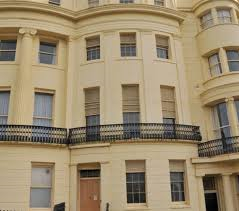
Upon leaving the Royal Pavilion, we'll be traveling to nearby Hove for a tour of the Regency Town House. I visited a few years ago when the project's originator, Nick Tyson, was still at the beginning of a scheme to restore the Town House to it's original state. Nick led our tour group through the rooms which were being stripped of years of paint and wallpaper, with each layer being analysed for decorative research. The restoration process is still ongoing and you can read an interview with Nick in which he discusses present and future plans for the Town House here.
From the Regency Town House website:
The objectives of the Regency Town House are threefold:
Raise the profile of Brighton and Hove as a historic location. Encourage the better preservation of the city's built heritage. Foster a wider appreciation of Regency architectural and social history.To these ends we are working to provide visitors with a traditionally refurbished historic home, to offer a programme of events about the history and architectural heritage of Brighton and Hove, and to develop digital resources relating to life in the Regency period.
Each year we run a variety of courses aimed at providing building professionals and the occupants of historic buildings with a better understanding of the issues surrounding the conservation and upkeep of Georgian and Victorian property.
Their collections include the Bevan and Dewar family letters:
Provided to us by Patrick Baty, a descendant of the Bevan family, these letters give a fantastic insight into family life in the Regency period, covering topics from the everyday domestic, to war and the death of a child. Here we have reproduced the letters together with transcriptions undertaken by volunteers.
I happen to follow Patrick on Twitter, an historical paint consultant who has worked on many stately homes and historically significant properties, including Apsley House. Patrick also has a fantastic blog where you'll find many articles of interest.
Our visit to the Regency Town House will provide our tour group with the rare opportunity to look behind the walls of a period home and to learn more about the preservation of historic properties.

You can watch a holiday "At Home" with the volunteers at the Regency Town House here in order to get an idea of the current state of the Town House.
To appreciate the enormity of the task ahead of the Regency Town House group, you can watch this clip from one of my favourtie shows, Grand Designs, featuring the restoration of a Georgian Town House in London. (55 minutes)
YOU'LL FIND FULL ITINERARY AND DETAILS OF THE DUKE OF WELLINGTON TOUR HERE
Published on April 25, 2014 00:00
April 23, 2014
IN THE GARDEN WITH KRISTINE

You may remember a previous post I did about the burrowing owl who had taken up residence on our front porch a few years ago, which you can read here.
This year, a pair of Northern Mockingbirds took up residence and constructed a nest in the shrubbery beside our driveway. Hubby and I kept an eye on the pair, fascinated as they built the nest and, soon after, deposited three, small, blue, speckled eggs within.
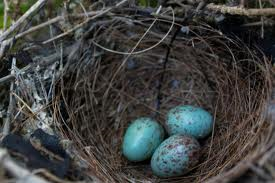
Every so often, we'd stand on tiptoe and peer down into the nest to see if any progress had been made. Before long, Hubby reported that two of the eggs had hatched. Did I want to go see the babies? No, I told him. I didn't want to do anything that might spook the parents away from the nest.
Next day, Hubby reported that he thought one of the babies had died. This did prompt me to peek into the nest. One of the babies - pink and featherless, was moving slightly. The second bird simply lay there in the nest, unmoving.
Hhhhmmm. I told Hubby to leave the nest alone; that maybe something was wrong with the baby bird and that the parents would deal with it as nature dictated, but that we shouldn't interfere with it.
Two days later, I dared to peek at the nest again and this is what I saw - two healthy baby birds. Now with feathers. And hungry, opened mouths. The bird we'd thought was ill or dead had apparently simply been sleeping. Joy!

We continued to peek at the babies over the next few days, until one day I looked, only to find that there was just one baby bird in the nest. Had the second fallen out? Fallen victim to prey? Panic set in until a movement caught my eye and I realized that the second bird had already left the nest and was sitting on a branch within the shrubbery.
By the time we checked in the next day, the babies were both venturing out of the nest, and out of the shrubbery, ready to greet the big, wide world as their parents watched from the telephone wire above.



Spring has indeed sprung - enjoy!
Published on April 23, 2014 00:30
April 21, 2014
AND FROM ELSEWHERE ON THE WEB . . . . .

Here's another round-up of interesting posts we've found from elsewhere on the web - enjoy!
Author Susanna Ives - 1819 Play Bills from the Theatre Royal
Ian Visits - The secret tube ticket that only works at one stop.
Shannon Selin - Imagining the Bounds of History - Napoleon's Mother, Letizia Bonaparte
The Telegraph - Lollipop lady's garden shed named national treasure
London Small Historic Houses - Bricks: The Building Blocks of London
Historical Hussies - Regency Pistols and Duels
The Week - The Fascinating Linguistic Legacy of the Crimean War
Published on April 21, 2014 00:00
April 18, 2014
THE DUKE OF WELLINGTON TOUR - VIDEO HIGHLIGHTS - PART 6
THE ROYAL PAVILION, BRIGHTON
 The Brighton Pavilion was built as the Prince Regent's seaside retreat and with it's exotic appearance and over-the-top architecture, the fanciful structure has brought many to open-mouthed astonishment, including the Duke of Wellington. Thankfully, Princess Lieven took the time to record the Duke's reaction to his first visit to the Prince's pleasure palace:
The Brighton Pavilion was built as the Prince Regent's seaside retreat and with it's exotic appearance and over-the-top architecture, the fanciful structure has brought many to open-mouthed astonishment, including the Duke of Wellington. Thankfully, Princess Lieven took the time to record the Duke's reaction to his first visit to the Prince's pleasure palace:
Brighton, January 26, 1822
I wish you were here to laugh. You cannot imagine how astonished the Duke of Wellington is. He had not been here before, and I thoroughly enjoy noting the kind of remark and the kind of surprise that the whole household evokes in a new-comer. I do not believe that, since the days of Heliogabalus, there have been such magnificence and such luxury. There is something effeminate in it which is disgusting. One spends the evening half-lying on cushions; the lights are dazzling; there are perfumes, music, liquers – “Devil take me, I think I must have got into bad company.” You can guess who said that, and the tone in which it was said. Here is one single detail about the establishment. To light the three rooms, used when the family is alone, costs 150 guineas an evening; when the apartment is fully opened up, it is double that.
What were your impressions of the Pavilion? If you haven't been to the Pavilion yet, or if you'd like to virtually visit once again,here are a few videos that will be of interest.
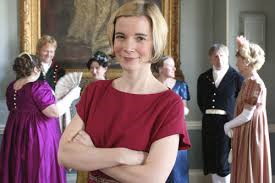
You can join Lucy Worsley on a tour of the Pavilion from the series The Regency Brand here.
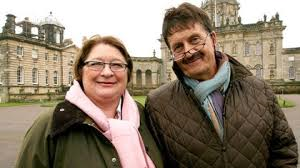
Take another tour of the Pavilion, complete with historic recipes, with the Royal Upstairs Downstairs team here.
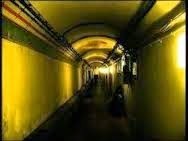
Watch a short video about George IV's secret tunnel at the Pavilion here.
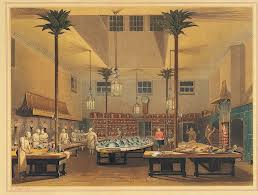
Did you know that the Pavilion's kitchens were transformed into an operating theatre during WWI?

You can find more about the Brighton Pavilion on the website is here.
COMPLETE ITINERARY AND DETAILS FOR THE DUKE OF WELLINGTON TOUR HERE
 The Brighton Pavilion was built as the Prince Regent's seaside retreat and with it's exotic appearance and over-the-top architecture, the fanciful structure has brought many to open-mouthed astonishment, including the Duke of Wellington. Thankfully, Princess Lieven took the time to record the Duke's reaction to his first visit to the Prince's pleasure palace:
The Brighton Pavilion was built as the Prince Regent's seaside retreat and with it's exotic appearance and over-the-top architecture, the fanciful structure has brought many to open-mouthed astonishment, including the Duke of Wellington. Thankfully, Princess Lieven took the time to record the Duke's reaction to his first visit to the Prince's pleasure palace:Brighton, January 26, 1822
I wish you were here to laugh. You cannot imagine how astonished the Duke of Wellington is. He had not been here before, and I thoroughly enjoy noting the kind of remark and the kind of surprise that the whole household evokes in a new-comer. I do not believe that, since the days of Heliogabalus, there have been such magnificence and such luxury. There is something effeminate in it which is disgusting. One spends the evening half-lying on cushions; the lights are dazzling; there are perfumes, music, liquers – “Devil take me, I think I must have got into bad company.” You can guess who said that, and the tone in which it was said. Here is one single detail about the establishment. To light the three rooms, used when the family is alone, costs 150 guineas an evening; when the apartment is fully opened up, it is double that.
What were your impressions of the Pavilion? If you haven't been to the Pavilion yet, or if you'd like to virtually visit once again,here are a few videos that will be of interest.

You can join Lucy Worsley on a tour of the Pavilion from the series The Regency Brand here.

Take another tour of the Pavilion, complete with historic recipes, with the Royal Upstairs Downstairs team here.

Watch a short video about George IV's secret tunnel at the Pavilion here.

Did you know that the Pavilion's kitchens were transformed into an operating theatre during WWI?

You can find more about the Brighton Pavilion on the website is here.
COMPLETE ITINERARY AND DETAILS FOR THE DUKE OF WELLINGTON TOUR HERE
Published on April 18, 2014 00:30
April 16, 2014
YEAR OF THE GEORGES AT HISTORIC ROYAL PALACES
Victoria here. 2014 marks several significant historical anniversaries. One hundred years ago, the world became embroiled in the Great War, known nowadays as World War I. Two hundred years ago the Allies triumphed over Napoleon, sent him into exile on Elba, then celebrated their grand victory with a series of London extravaganzas before settling into the Congress of Vienna where they argued over the fate of a non-Napoleonic Europe.
 Kensington Palace
Kensington Palace
Three hundred years ago in 1714, the Hanoverians became Kings of England, when King George I took the throne left vacant by the death of Queen Anne (1665-1714) in August 1714. Anne's several children had predeceased her and at her death, Great Britain was left without a successor as monarch. A few years earlier, after the death of her one child who lived to the age of eleven (William, Duke of Gloucester, 1689-1700), the English Parliament struggled to find a successor to the Queen, a successor who would not restore Roman Catholicism. The Act of Settlement of 1701 gave the crown, assuming no further children were born to Anne, to Sophia, Electress of Hanover, and her Protestant descendants. She was a granddaughter of James I, and though dozens of Catholic family members had closer ties to Anne, all but Protestants were precluded from the succession. Sophia, the Electress, had died just two months before Queen Anne's passing; thus, her eldest son was Elector and became British King.
 Studio of Sir Godfrey Kneller, George I, c. 1714
Studio of Sir Godfrey Kneller, George I, c. 1714
Georg Ludwig (1660-1727) was 54, the Elector of Hanover, when he became the King of Great Britain and Ireland. George had married Sophia Dorothea of Celle in 1682. The marriage, though it resulted in two children, was never happy. When he came to London to receive the British crown, Sophia remained behind in Germany, more or less a prisoner. for the rest of her life. When George I was crowned in Westminster Abbey in October, 1714, there was widespread rioting in opposition to his rule.
However, the politically powerful, mainly the Whigs, kept him in power, even though he never learned to speak English. During his reign, Sir Robert Walpole, first real prime minister, truly ran the government. Many historians see George I's time as big jump in shift of power from the crown to Parliament.
 Thomas Hudson: George II, 1744
Thomas Hudson: George II, 1744
George II succeeded his father in October, 1727, as the last King of Britain born elsewhere; he also had the distinction of being the last British king to lead his armies in battle during the War of Austrian Succession 1743. He'd had a contentious relationship with his father, and the same could be said of his dealings with his son and heir, Prince Frederick. But Frederick died before his father and thus the third Hanoverian to wear the British crown was George II's grandson George III, who succeeded in 1760 at the age of 22.
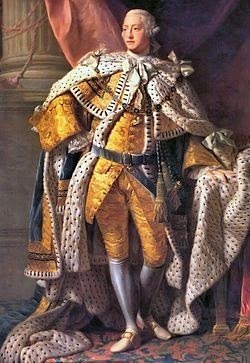 Allan Ramsay, George III, 1762
Allan Ramsay, George III, 1762
This year, Historic Royal Palaces celebrate the Hanoverians at three of their popular sites. At Hampton Court, events will center around George I and his reign. You'll meet the Court of George II at the newly renovated Kensington Palace, soon also to be the home of the latest George, Prince George of Cambridge, and his parents Prince William, Duke of Cambridge and Her Grace, Catherine, the Duchess of Cambridge. Kew Palace in Kew Gardens will host events centering on the family of George III, the first of the Hanoverian kings actually to be born in England.
 Hampton Court Palace There will be a large number of events at all three locations, from scholarly meetings to family activities. Learn more here.
Hampton Court Palace There will be a large number of events at all three locations, from scholarly meetings to family activities. Learn more here.
Join our blogger pal Madame Guillotine as she learns about the Glorious Georges here.
 The Queen's Gallery © Her Majesty Queen Elizabeth II Until October 2014, the Queen's Gallery in Buckingham Palace is presenting an exhibition of treasures from the Royal Collection: The 1st Georgians: Art & Monarchy 1714-1760. Click here for more information.
The Queen's Gallery © Her Majesty Queen Elizabeth II Until October 2014, the Queen's Gallery in Buckingham Palace is presenting an exhibition of treasures from the Royal Collection: The 1st Georgians: Art & Monarchy 1714-1760. Click here for more information.
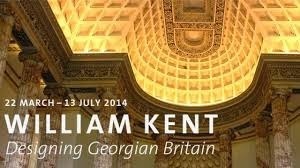 The Victoria and Albert Museum will also mark the early Georgian period with its exhibition William Kent: Designing Georgian Britain, on display until July 13, 2014. Click here for more information.
The Victoria and Albert Museum will also mark the early Georgian period with its exhibition William Kent: Designing Georgian Britain, on display until July 13, 2014. Click here for more information.
Kristine visited this exhibition earlier this year when it was shown in NYC by the co-organizer, the Bard Graduate Center. See her report here.


 Kensington Palace
Kensington PalaceThree hundred years ago in 1714, the Hanoverians became Kings of England, when King George I took the throne left vacant by the death of Queen Anne (1665-1714) in August 1714. Anne's several children had predeceased her and at her death, Great Britain was left without a successor as monarch. A few years earlier, after the death of her one child who lived to the age of eleven (William, Duke of Gloucester, 1689-1700), the English Parliament struggled to find a successor to the Queen, a successor who would not restore Roman Catholicism. The Act of Settlement of 1701 gave the crown, assuming no further children were born to Anne, to Sophia, Electress of Hanover, and her Protestant descendants. She was a granddaughter of James I, and though dozens of Catholic family members had closer ties to Anne, all but Protestants were precluded from the succession. Sophia, the Electress, had died just two months before Queen Anne's passing; thus, her eldest son was Elector and became British King.
 Studio of Sir Godfrey Kneller, George I, c. 1714
Studio of Sir Godfrey Kneller, George I, c. 1714 Georg Ludwig (1660-1727) was 54, the Elector of Hanover, when he became the King of Great Britain and Ireland. George had married Sophia Dorothea of Celle in 1682. The marriage, though it resulted in two children, was never happy. When he came to London to receive the British crown, Sophia remained behind in Germany, more or less a prisoner. for the rest of her life. When George I was crowned in Westminster Abbey in October, 1714, there was widespread rioting in opposition to his rule.
However, the politically powerful, mainly the Whigs, kept him in power, even though he never learned to speak English. During his reign, Sir Robert Walpole, first real prime minister, truly ran the government. Many historians see George I's time as big jump in shift of power from the crown to Parliament.
 Thomas Hudson: George II, 1744
Thomas Hudson: George II, 1744George II succeeded his father in October, 1727, as the last King of Britain born elsewhere; he also had the distinction of being the last British king to lead his armies in battle during the War of Austrian Succession 1743. He'd had a contentious relationship with his father, and the same could be said of his dealings with his son and heir, Prince Frederick. But Frederick died before his father and thus the third Hanoverian to wear the British crown was George II's grandson George III, who succeeded in 1760 at the age of 22.
 Allan Ramsay, George III, 1762
Allan Ramsay, George III, 1762This year, Historic Royal Palaces celebrate the Hanoverians at three of their popular sites. At Hampton Court, events will center around George I and his reign. You'll meet the Court of George II at the newly renovated Kensington Palace, soon also to be the home of the latest George, Prince George of Cambridge, and his parents Prince William, Duke of Cambridge and Her Grace, Catherine, the Duchess of Cambridge. Kew Palace in Kew Gardens will host events centering on the family of George III, the first of the Hanoverian kings actually to be born in England.
 Hampton Court Palace There will be a large number of events at all three locations, from scholarly meetings to family activities. Learn more here.
Hampton Court Palace There will be a large number of events at all three locations, from scholarly meetings to family activities. Learn more here.Join our blogger pal Madame Guillotine as she learns about the Glorious Georges here.
 The Queen's Gallery © Her Majesty Queen Elizabeth II Until October 2014, the Queen's Gallery in Buckingham Palace is presenting an exhibition of treasures from the Royal Collection: The 1st Georgians: Art & Monarchy 1714-1760. Click here for more information.
The Queen's Gallery © Her Majesty Queen Elizabeth II Until October 2014, the Queen's Gallery in Buckingham Palace is presenting an exhibition of treasures from the Royal Collection: The 1st Georgians: Art & Monarchy 1714-1760. Click here for more information.
 The Victoria and Albert Museum will also mark the early Georgian period with its exhibition William Kent: Designing Georgian Britain, on display until July 13, 2014. Click here for more information.
The Victoria and Albert Museum will also mark the early Georgian period with its exhibition William Kent: Designing Georgian Britain, on display until July 13, 2014. Click here for more information.Kristine visited this exhibition earlier this year when it was shown in NYC by the co-organizer, the Bard Graduate Center. See her report here.


Published on April 16, 2014 00:30
April 14, 2014
WE'RE BATTING A THOUSAND!
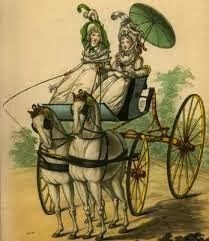
Welcome - you are reading our 1,000th post! If you’ve arrived at this page, you must share our interest in all things Georgian, Regency and Victorian, as well as our passion for the England of today. How many of the 999 previous blog posts we've published have you read? Have you been with us from the start in March 2010?
When we first began this blog, we had no idea how central it would become to our lives...almost everything that happens to either of us is considered possible fodder for a post. Articles in magazines and newspapers, art exhibitions, books, dinners, plays, concerts, movies, interesting tweets, our travels, our husbands ...would it work for Number One London? A London connection -- anything vaguely British will do.
But we've also learned a lot from our wanderings on the web and elsewhere. Geography and history foremost among them. Eccentricities are our favorite -- or wait! Maybe posts on actors from the old days. Or do we really prefer some of the new actors like Benedict or Jude or Orlando. Double wait -- what about Colin and Sean and Alan?
But let's get back to the basics. We like to research, write, and dream about the Duke of Wellington.
And now we're planning and leading the Duke of Wellington Tour next September. You are cordially invited to accompany us, meeting up on the 4th of September in London, and visiting around Kent, Sussex, Hampshire and Berkshire until we depart on September 14 from Windsor, with transfers to Heathrow included. For all the details, click here.
 Highclere Castle, aka Downton Abbey
Highclere Castle, aka Downton AbbeyCounting our shared 2010 trip to Britain and the Battlefield of Waterloo in Belgium, we've reported on six trips to England...sharing our pictures and experiences with our readers.
 At the site of the Battle of Waterloo, Belgium, 2010 with the Duke
At the site of the Battle of Waterloo, Belgium, 2010 with the DukeHere's the post that got us started:
If you’ve arrived at this page, you must share our interest in all things Georgian, Regency and Victorian, as well as our passion for the England of today.
Having written The Writer’s Guide to Everyday Life in Regency and Victorian England, Kristine Hughes has spent the last several years researching her next book, a true opus that will focus on fashionable daily life as experienced by the ladies of London 1700 – 1900. Victoria Hinshaw has published eight Regency-set novels and three novellas with Kensington Zebra. She is working on several more projects associated with the Georgian era but she admits to a real delight in the Victorian period, since it is hers. Whatever motivated her parents to choose the name Victoria, she has always believed that there exsists a mystical tie between the Great Queen and her.
Victoria and Kristine originally named this blog Research England, for that is their vocation and avocation. But they are not deeply academic, and their mischevious senses of humor crept into their posts. So they decided to start over as Number One London. They promise lots of research oriented material, considerable travel reporting, and amusing incidents, all accompanied by occasional asides, nonsense and bon mots.
Kristine has been planning to attend the re-enactment of the Battle of Waterloo near Brussels for some years now. The 2010 event has always been her goal and the year has finally arrived – Huzza! The trip will be even more wonderful now that Victoria Hinshaw will be joining her and they'll be spending several days in London before taking the Dover ferry to Calais. Oh, how they wish they weren’t many decades too late to call upon poor Mr. Brummell while they're in France! Look for blogs and details about their upcoming adventures both before, during and after the magical days of June 2010.
Victoria and Kristine look forward to making your aquaintance. Please visit often!
Have we succeeded? Let us know!
 How we look when at The Pub together
How we look when at The Pub together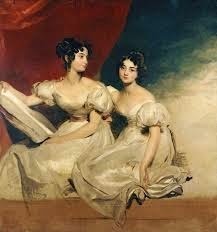 How we look when we are in England together.*
How we look when we are in England together.**Sir Thomas Lawrence, The Fullerton Sisters
Published on April 14, 2014 00:30
RETURN TO "A WARM WELCOME" - WE BAT A THOUSAND

If you’ve arrived at this page, you must share our interest in all things Georgian, Regency and Victorian, as well as our passion for the England of today. How many of the 999 previous blog posts we've published have you read? Have you been with us from the start in March 2010?
When Kristine and Victoria started this blog, we had no idea how central it would become to our lives...almost everything that happens to either of us is considered possible fodder for a post. Articles in magazines, tweets, newspapers, art exhibitions, books, dinners, plays, concerts, movies...would it work for Number One London??? A London connection -- anything vaguely British will do. But we've also learned a lot from our wanderings on the web and elsewhere. Geography and history foremost among them. Eccentricities are our favorite -- or wait! Maybe posts on actors from the old days. Or do we really prefer some of the new actors like Benedict or Jude or Orlando. Double wait -- what about Colin and Sean and Alan?
But let's get back to the basics. We like to research, write, and dream about the Duke of Wellington.
And now we're planning and leading the Duke of Wellington Tour next September. You are cordially invited to accompany us, meeting up on the 4th of September in London, and visiting around Kent, Sussex, Hampshire and Berkshire until we depart on September 14 from Windsor, with transfers to Heathrow included. For all the details, click here.
 Highclere Castle, aka Downton Abbey
Highclere Castle, aka Downton AbbeyAmong the highlights of the Duke of Wellington Tour will be a visit to Highclere Castle, where the popular series Downton Abbey is filmed. We can't wait to see the grounds and the elegant interiors with their fine paintings and antiques.
Counting our shared 2010 trip to Britain and the Battlefield of Waterloo in Belgium, we've reported on six trips to England...sharing our pictures and experiences with our readers.
 At the site of the Battle of Waterloo, Belgium, 2010
At the site of the Battle of Waterloo, Belgium, 2010Here's how we started:
Having written The Writer’s Guide to Everyday Life in Regency and Victorian England, Kristine Hughes has spent the last several years researching her next book, a true opus that will focus on fashionable daily life as experienced by the ladies of London 1700 – 1900. Victoria Hinshaw has published eight Regency-set novels and three novellas with Kensington Zebra. She is working on several more projects associated with the Georgian era but she admits to a real delight in the Victorian period, since it is hers. Whatever motivated her parents to choose the name Victoria, she has always believed that there exists a mystical tie between the Great Queen and her.
Victoria and Kristine originally named this blog Research England, for that is our vocation and avocation. But we are not deeply academic, and our mischievous senses of humor crept into our posts. So we decided to start over as Number One London (found at onelondonone.blogspot.com). We originally promised lots of research oriented material, considerable travel reporting, and amusing incidents, all accompanied by occasional asides, nonsense and bon mots.
Have we succeeded? Let us know!
Victoria and Kristine look forward to continuing our acquaintance. Please visit often!
Published on April 14, 2014 00:30
April 11, 2014
THE DUKE OF WELLINGTON TOUR - VIDEO HIGHLIGHTS - PART FIVE
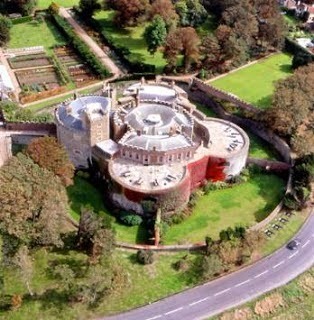
Walmer Castle, Kent
On Monday, September 8th, 2014, we will journey by private bus from London through the countryside of Kent to the coast of the British Channel at Walmer Castle.
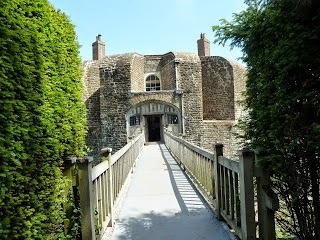 Walmer Castle
Walmer CastleWalmer Castle was built by Henry VIII to fortify the Kentish Coast against the invasion. The Duke lived – and died – here, his residence as Lord Warden of the Cinque Ports, an appointment that dates back to the 12th century. In much more recent times, Winston Churchill was the Lord Warden; and Queen Elizabeth the Queen Mother was Lord Warden from 1978-2002 (We’ll get to see the rose garden she planted at Walmer). Here is lovely video of the Castle and Gardens, accompanied by Bach..
In November, 1842, Queen Victoria and Prince Albert, with their first two children, Vicky, the Princess Royal, and Bertie, later King Edward VII, visited Walmer Castle. One of the ladies in waiting, Lady Lyttleton wrote of the Castle in her Correspondence:
"This is much what I expected. A Big round tower, with odd additions stuck on. Immense thick walls, and a heap of comical rooms of the odd shapes necessary as parts of a round house built close upon the shingly beach…It seems needless to go out for air, doors and windows all chatter and sing at once, and hardly keep out the dark storm of wind and rain which is howling round. All this outward rudeness mixes very oddly with the numbers of smart servants and courtly whispers and very tolerably got-up imitation of the palace mummeries we have contrived indoors…"
 Lady Lyttelton by John Jackson Lady Lyttelton (1787-1870) was the daughter of the 2nd Earl Spencer and his Countess, nee Lavinia Bingham; Lady Sarah was thus the niece of Georgiana, Duchess of Devonshire. In 1813, Lady Sarah married William Henry Lyttelton (1782–1837) who became the 3rd Baron Lyttleton in 1828; they had three sons and two daughters. Baron Lyttleton died in 1837, and soon afterwards, Lady Lyttleton became a lady in waiting to the new Queen Victoria.
Lady Lyttelton by John Jackson Lady Lyttelton (1787-1870) was the daughter of the 2nd Earl Spencer and his Countess, nee Lavinia Bingham; Lady Sarah was thus the niece of Georgiana, Duchess of Devonshire. In 1813, Lady Sarah married William Henry Lyttelton (1782–1837) who became the 3rd Baron Lyttleton in 1828; they had three sons and two daughters. Baron Lyttleton died in 1837, and soon afterwards, Lady Lyttleton became a lady in waiting to the new Queen Victoria.As a brief aside, the Lyttelton family resided at 17 St. James's Place, now part of the Stafford Hotel, which we'll be viewing as part of the St. James's Walking Tour we've scheduled during the London portion of the Tour.
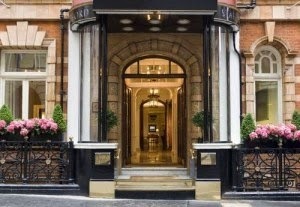 Stafford Hotel, St. James's, London
Stafford Hotel, St. James's, London
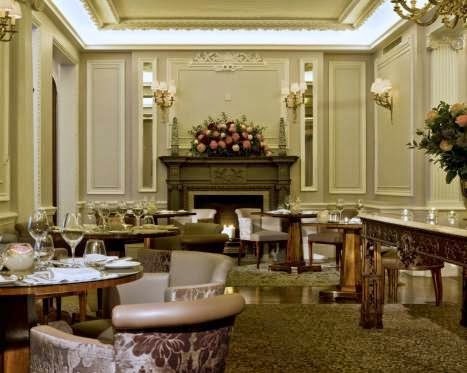 The Lyttleton, fine dining room in the StaffordLady Lyttleton's further comments on Walmer Castle are included in this video, from the BBC series Royal Upstairs Downstairs. Antiques expert Tim Wonnacott and chef Rosemary Shrager visit twenty of the houses visited by Queen Victoria to see what she saw and taste what she ate. In this 29-minute episode, they are at Walmer Castle.
The Lyttleton, fine dining room in the StaffordLady Lyttleton's further comments on Walmer Castle are included in this video, from the BBC series Royal Upstairs Downstairs. Antiques expert Tim Wonnacott and chef Rosemary Shrager visit twenty of the houses visited by Queen Victoria to see what she saw and taste what she ate. In this 29-minute episode, they are at Walmer Castle.
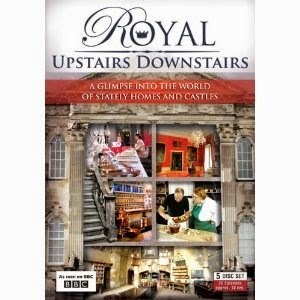 You can see three more posts from this blog about Walmer Castle.Victoria visits in 2011 here. Wellington's life at Walmer here. The Death of Wellington at Walmer here.
You can see three more posts from this blog about Walmer Castle.Victoria visits in 2011 here. Wellington's life at Walmer here. The Death of Wellington at Walmer here. You'll find the complete itinerary and details for The Duke of Wellington Tour here
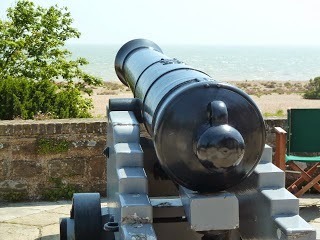
Published on April 11, 2014 00:30
Kristine Hughes's Blog
- Kristine Hughes's profile
- 6 followers
Kristine Hughes isn't a Goodreads Author
(yet),
but they
do have a blog,
so here are some recent posts imported from
their feed.



